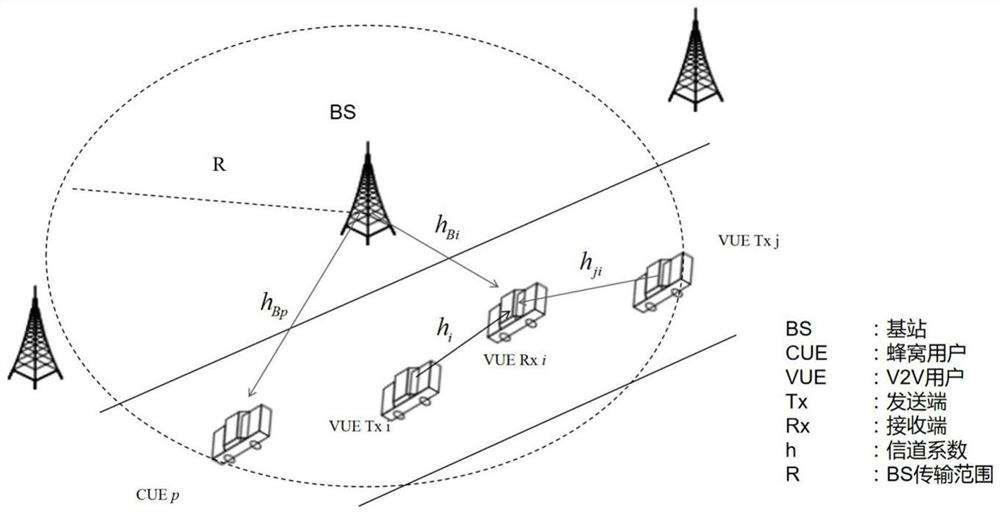A noma-based resource allocation method for Internet of Vehicles
A technology of resource allocation and Internet of Vehicles, applied in the field of wireless resource allocation of Internet of Vehicles, can solve problems such as insufficient research, and achieve the effect of reducing excessive interference
- Summary
- Abstract
- Description
- Claims
- Application Information
AI Technical Summary
Problems solved by technology
Method used
Image
Examples
Embodiment Construction
[0046] Below in conjunction with specific embodiment, further set forth the present invention, should be understood that these embodiments are only used to illustrate the present invention and are not intended to limit the scope of the present invention, after having read the present invention, those skilled in the art will understand various equivalent forms of the present invention The modifications all fall within the scope defined by the requirements of this application.
[0047] figure 1 The distribution of CUE users and VUE users under NOMA-based Internet of Vehicles resource allocation is shown. A macro base station BS has a certain coverage area. Within its transmission range, there are cellular vehicle users CUE and V2V vehicle users VUE. NOMA is used for VUE users. Multiple VUE user pairs can share the same spectrum resource in the form of NOMA , different VUE user pairs are differentiated in power. Multiple VUE user pairs sharing the same spectrum resource form a ...
PUM
 Login to View More
Login to View More Abstract
Description
Claims
Application Information
 Login to View More
Login to View More - R&D
- Intellectual Property
- Life Sciences
- Materials
- Tech Scout
- Unparalleled Data Quality
- Higher Quality Content
- 60% Fewer Hallucinations
Browse by: Latest US Patents, China's latest patents, Technical Efficacy Thesaurus, Application Domain, Technology Topic, Popular Technical Reports.
© 2025 PatSnap. All rights reserved.Legal|Privacy policy|Modern Slavery Act Transparency Statement|Sitemap|About US| Contact US: help@patsnap.com



